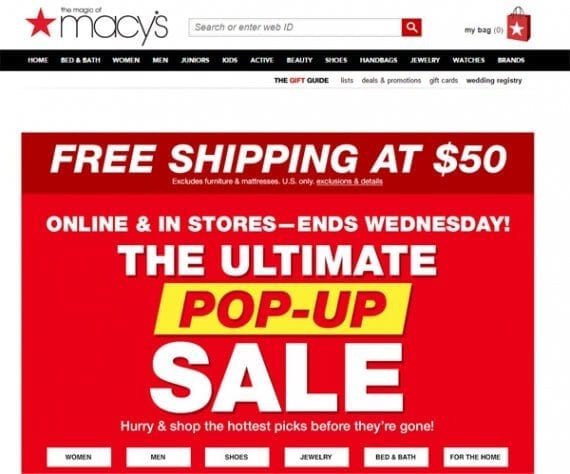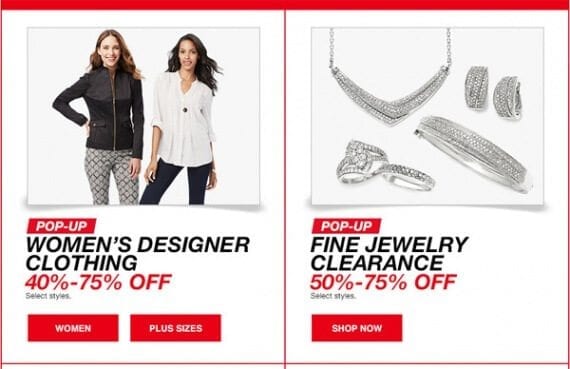As spring arrives, many online retailers find that they need to change products or product lines ??winter coats won?t sell as well in April or May. Last season?s fashions, innovations, and novelties are already being replaced, and if you need to keep cash flowing, these older items must go.
Inventory management is one of the keys to online retail success. And good inventory management often?requires the occasional purge. Slow moving, out-of-season products need to be cleared out. Money and space must be?made available for newer or faster selling items.
Many retail businesses have discovered ways to successfully clear out aging or unwanted inventory. What follows are five tips to help spring clean your warehouse.
1. There Is a Difference Between a Sale and Clearance
In retail, the term ?sale? has two meanings. First, a ?sale? is when a customer buys something. In this context, ?sale? can describe any retail transaction. Second, online retailers can put items?on ?sale.? In this latter case, a product or products are offered at a temporary, lower price. ?Sales? are meant to increase profit by increasing the number of units sold.
?Clearance,? then, is a special sort of sale intended to reduce inventory, probably to zero. Thus, it can be done rather differently than a sale meant to increase profit. The items put on clearance represent a sunk cost, or a cost that has already been incurred and cannot be fully recovered.
Last year?s parka styles are simply not worth as much when it is 70 degrees outside, and may be worthless if you try to hang on to them until next winter. Thus, the money invested to purchase them is already gone.
So here is the spring-cleaning, inventory-reduction tip: Sell clearance items cheap. Set a goal like, ?I want to be out of inventory in two weeks.? Then set a price and after three days do a little test. Are you on pace to sell out in two weeks? If you are, keep going. If not, you may need to reduce the price further to sell out on schedule.
2. Unless You Sell Wine, Inventory Won?t Get Better with Age
There are very few retail products that get better with age. Wine?is an?example of inventory an online retailer should keep year after year.
This spring, look at the seasonal items that you still have left in stock. Will these items age well in your warehouse? Will boxes fade? Dust collect? Is there a chance the manufacturer will replace the item with a newer model? Or perhaps update the packaging?
It is better to sell an item at cost or even at a loss and recover a portion of your investment than to have to hang on to it only to discard it later because it is no longer salable.
Here?s the tip: Don?t carry over seasonal inventory unless you are certain you can get full retail for it next year.
3. Offer Clearance Items to Your Best Customers First
When you have decided that certain?items need to go, consider?offering those items to your best customers first.
Rather than just dropping the prices on clearance items and sending out mass emails, consider selectively targeting those shoppers who buy from you again and again.
You could send an email to your top 10?percent of customers. Let them know that you will be putting the item or items on clearance next week, but will give them a chance to purchase the items at the discounted price ahead of time with a coupon code.
In this way, you make your best customers feel like, well, your best customers. They could begin to trust your business more, knowing that you recognize their value and give them early access to special offers.
4. Merchandise with Meaning
On-site merchandising can have a significant impact on sales. If you want?to rid your warehouse of out-of-season, slow-moving products, consider?merchandising those products on your site.
Here is one example. Include clearance offers on your home page or on every product page. Macy?s, the?omnichannel retailer, did just this on its home page. The top section used a large red banner to promote its current clearance sale.

Macy’s merchandises closeout items at the top of its home page.
Further down the home page, you could see examples of the items being offered.

A meaningful amount of space is given to the clearance sale.
5. Sell Clearance Items on Marketplaces and?Auction Sites
Remember that you do not need to sell clearance items on your own site. For some online merchants, putting anything on sale might conflict with their premium brand. They’ve spent a lot of time, money, and effort establishing their business as a leader in customer service or product quality and selling closeouts would not help their hard-earned reputation.
In these cases, you can post closeout items on marketplaces like Amazon or Rakuten and on auction sites like Ebay. Items can be listed under an alternative business name, or even sold as lots to other retailers.
As is often the case with inventory spring cleaning, you may not recover the full amount you invested in the items, but you will receive?some cash without, necessarily, impacting your brand.


